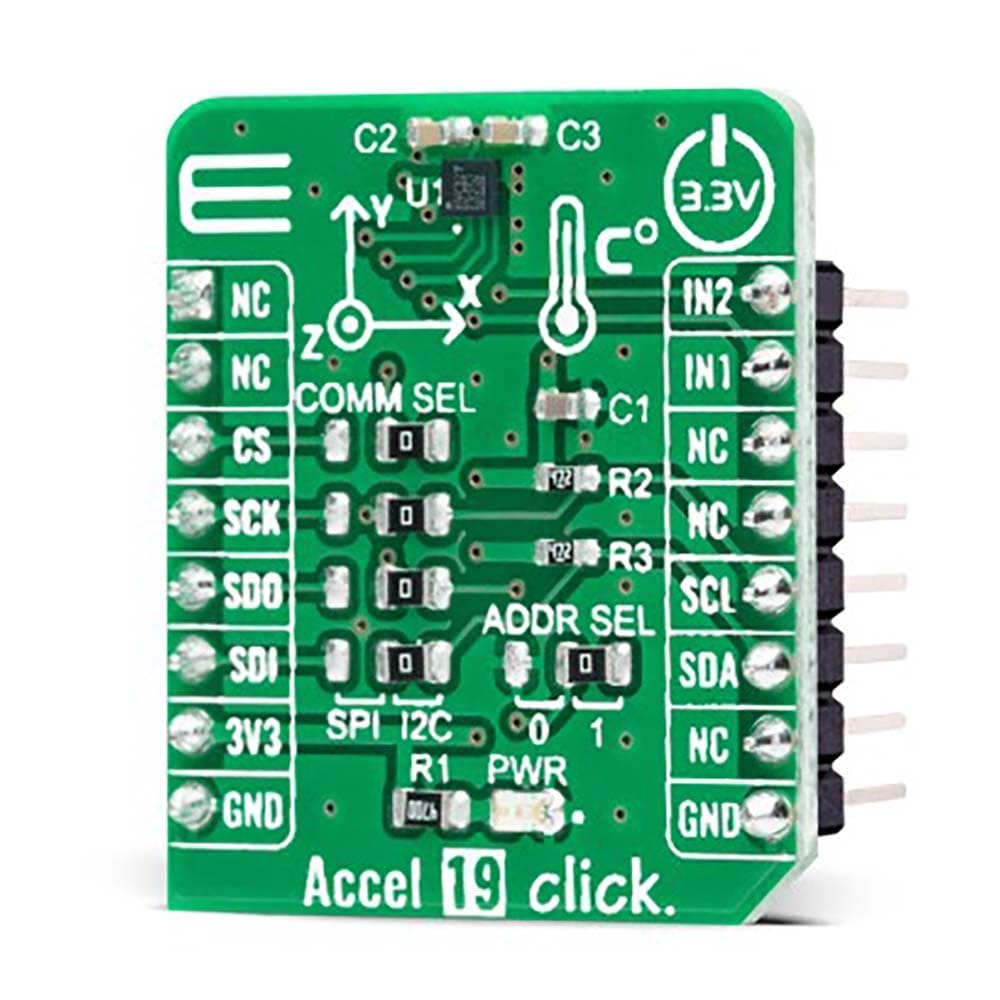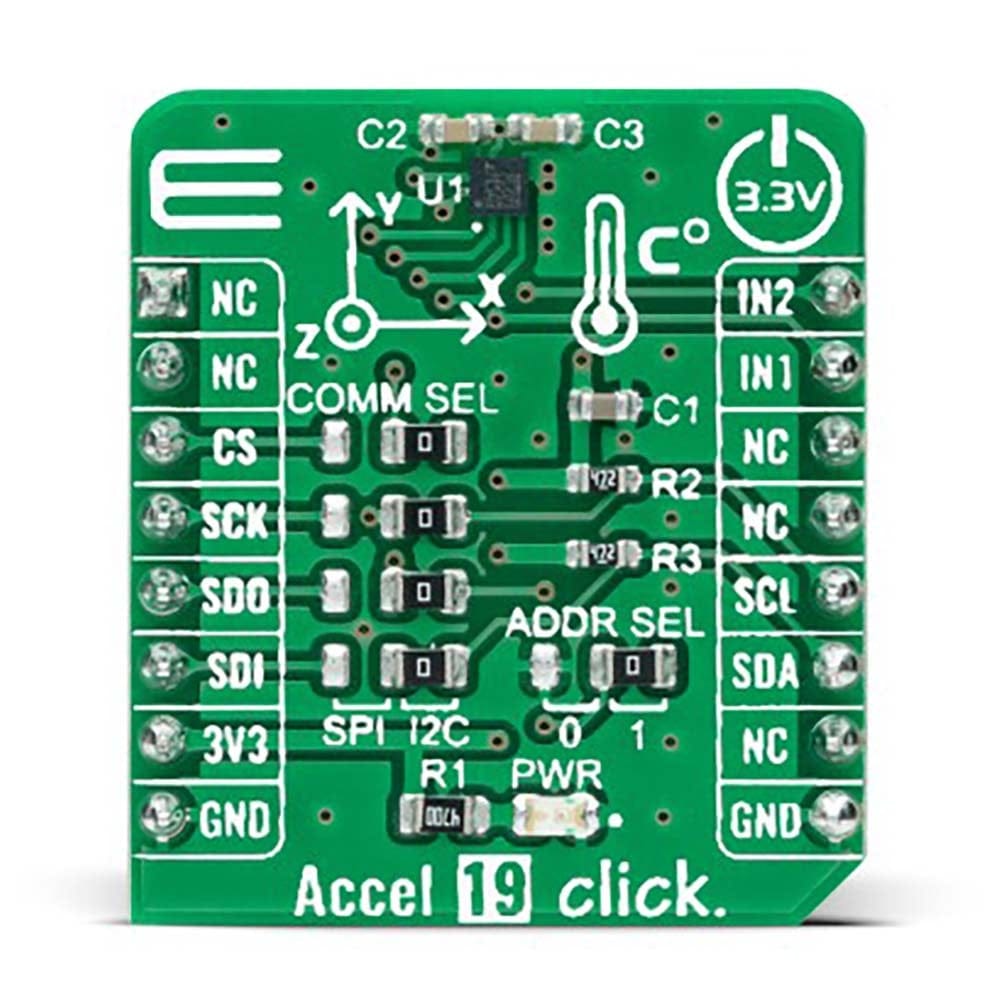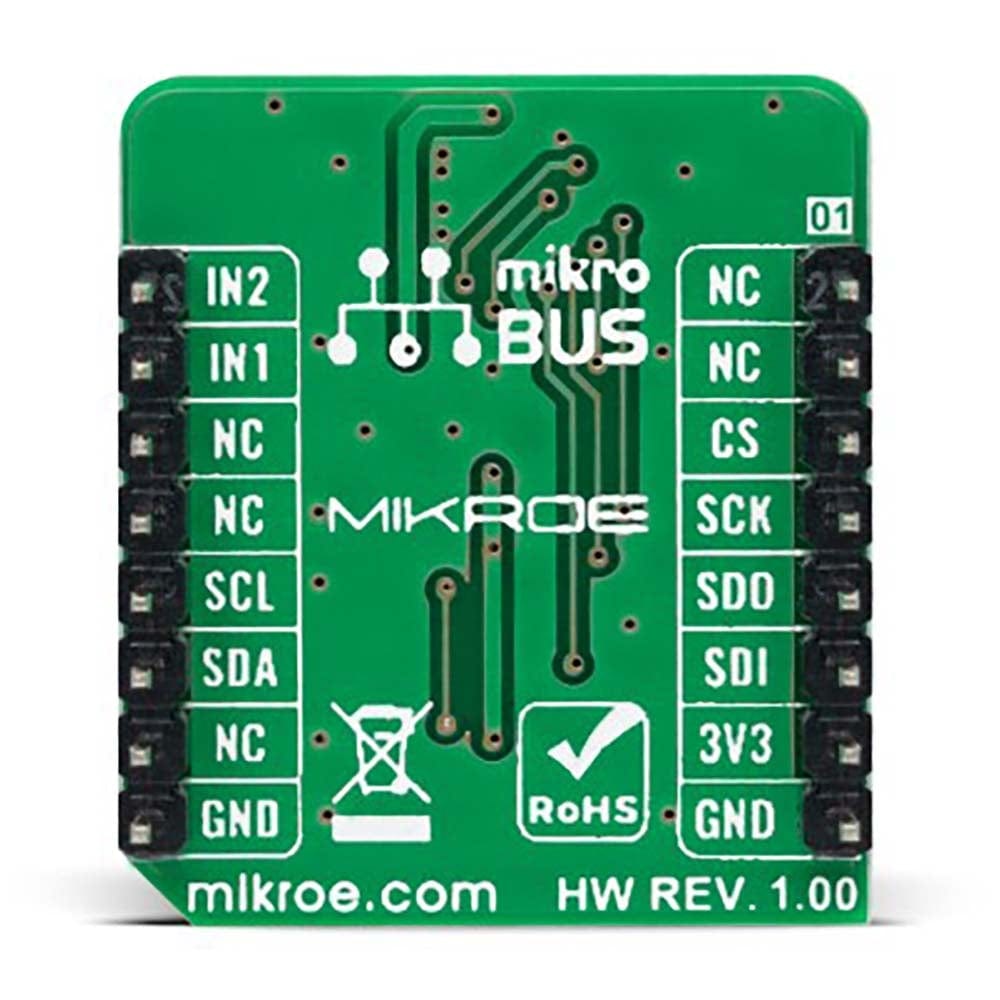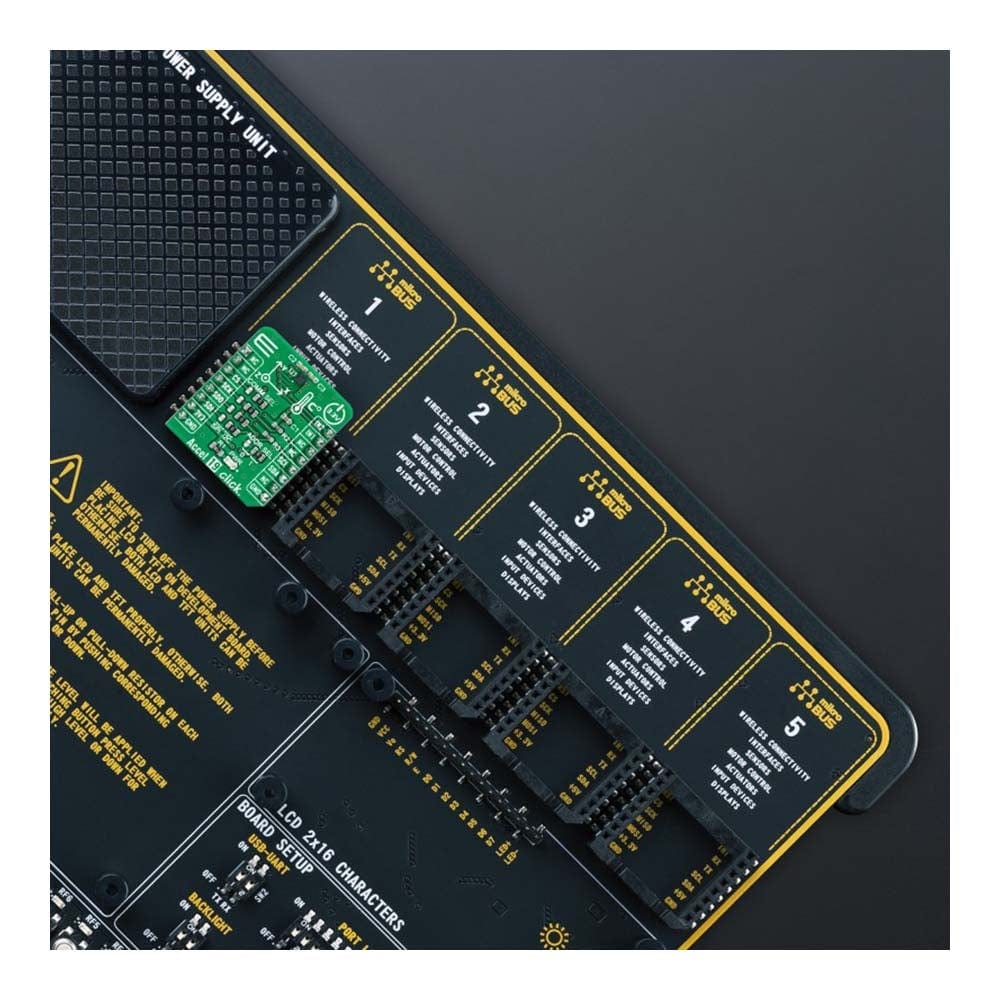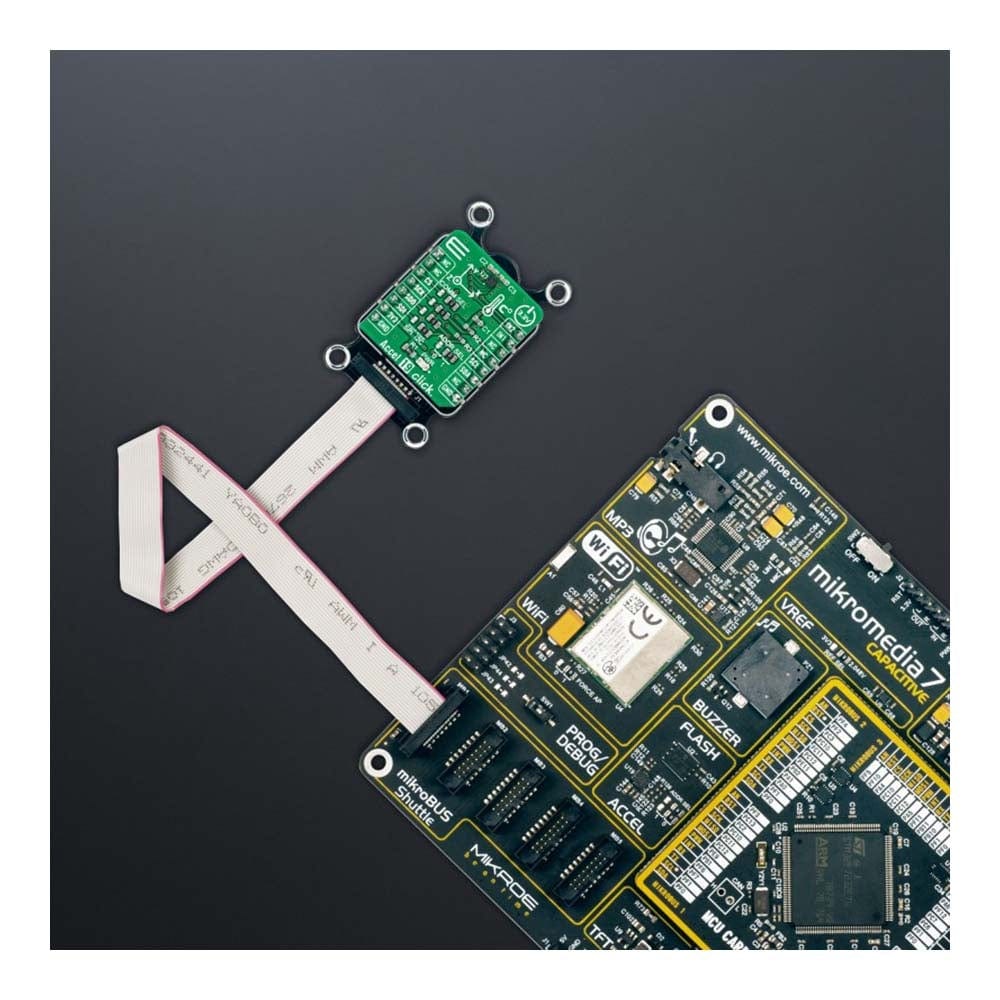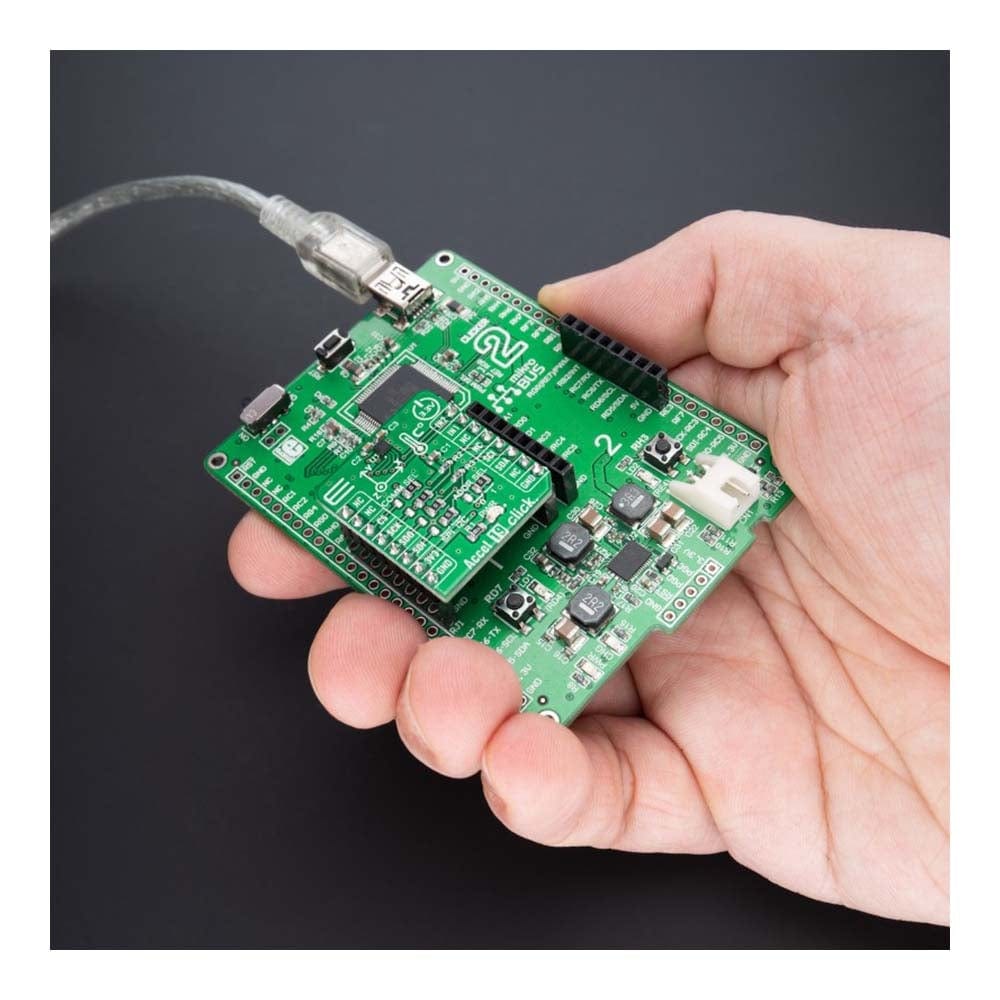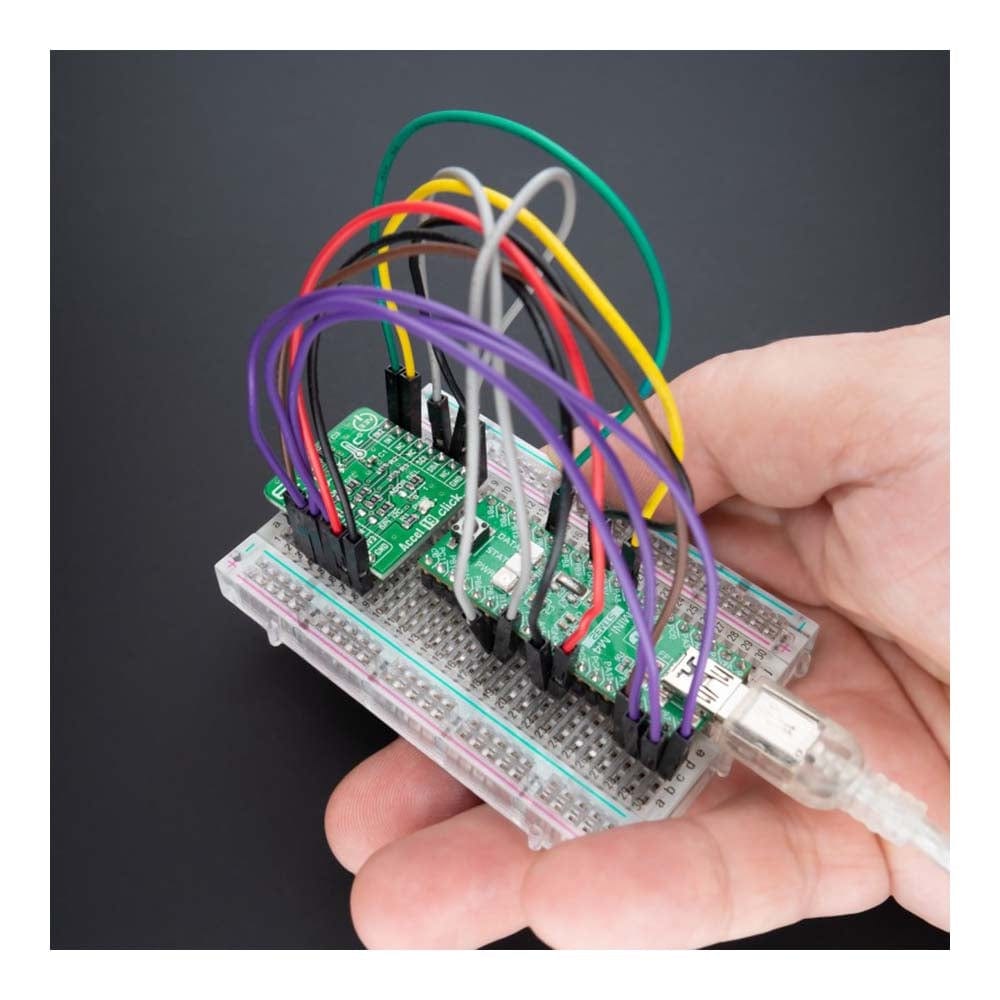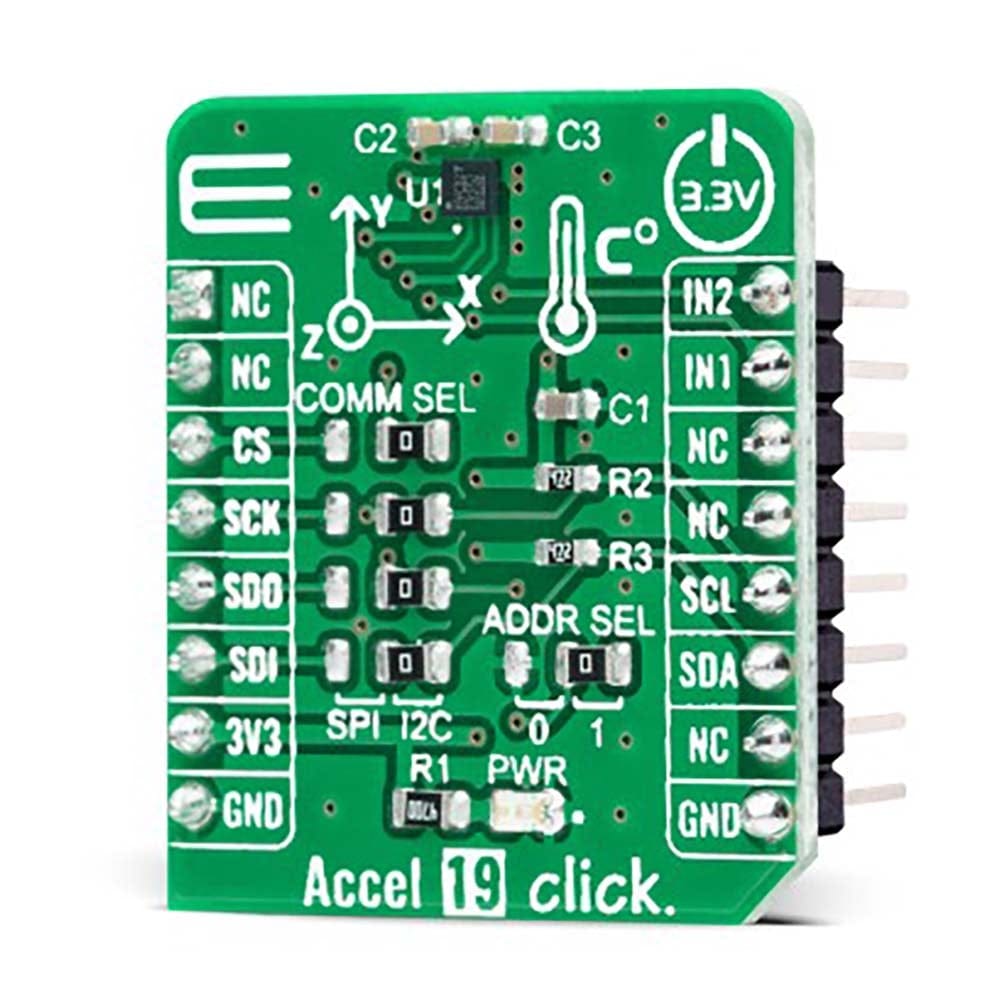
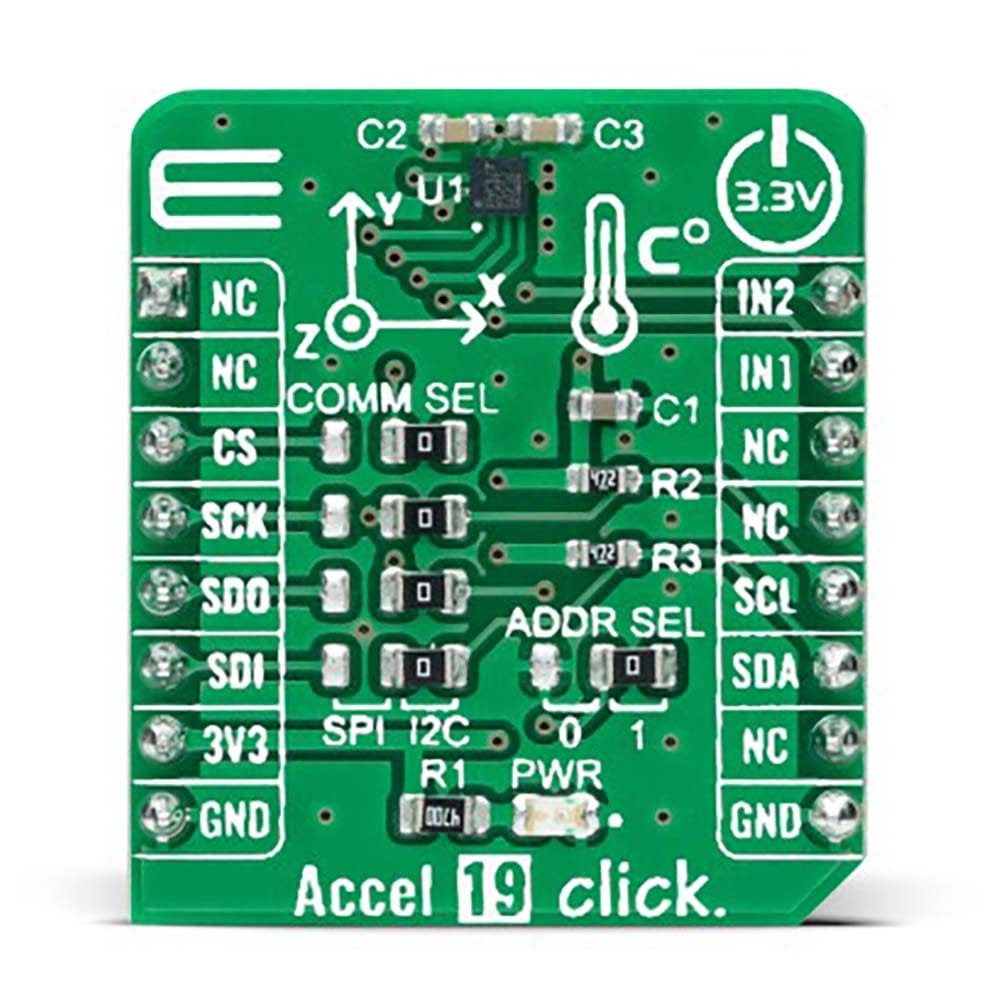
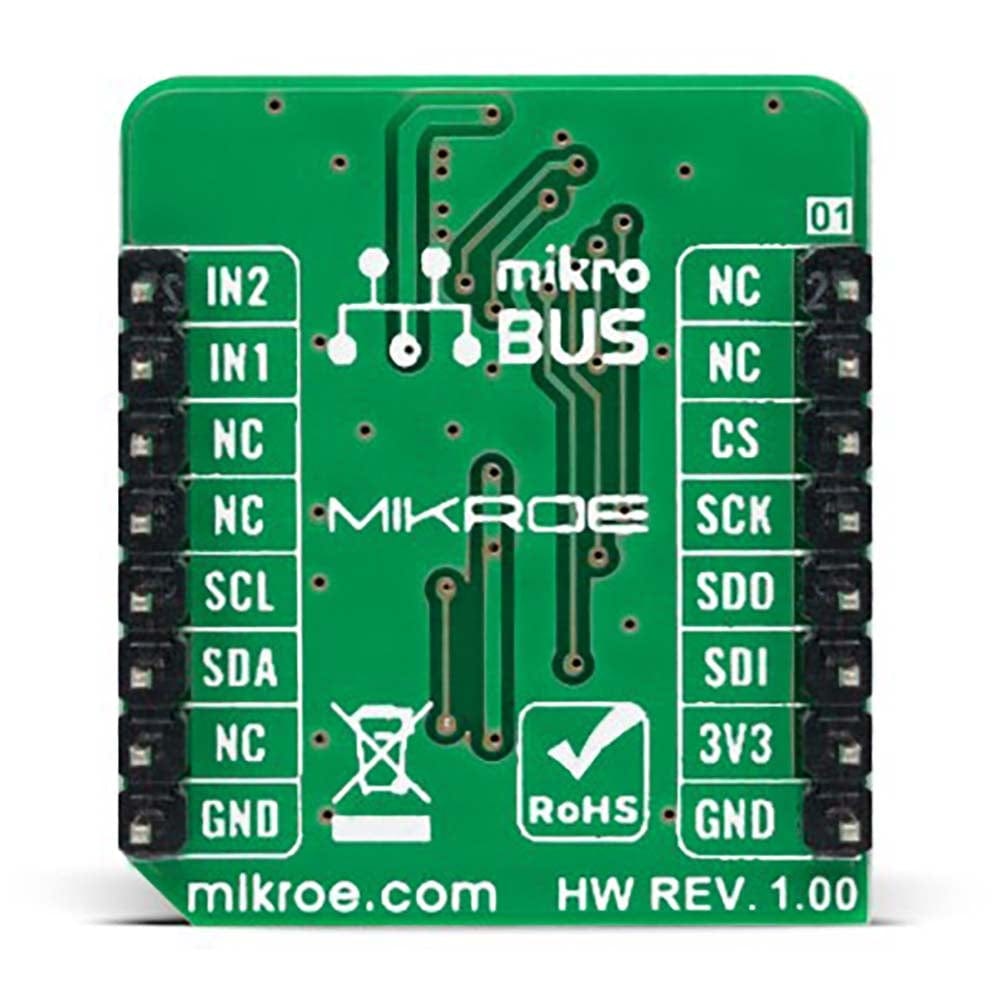
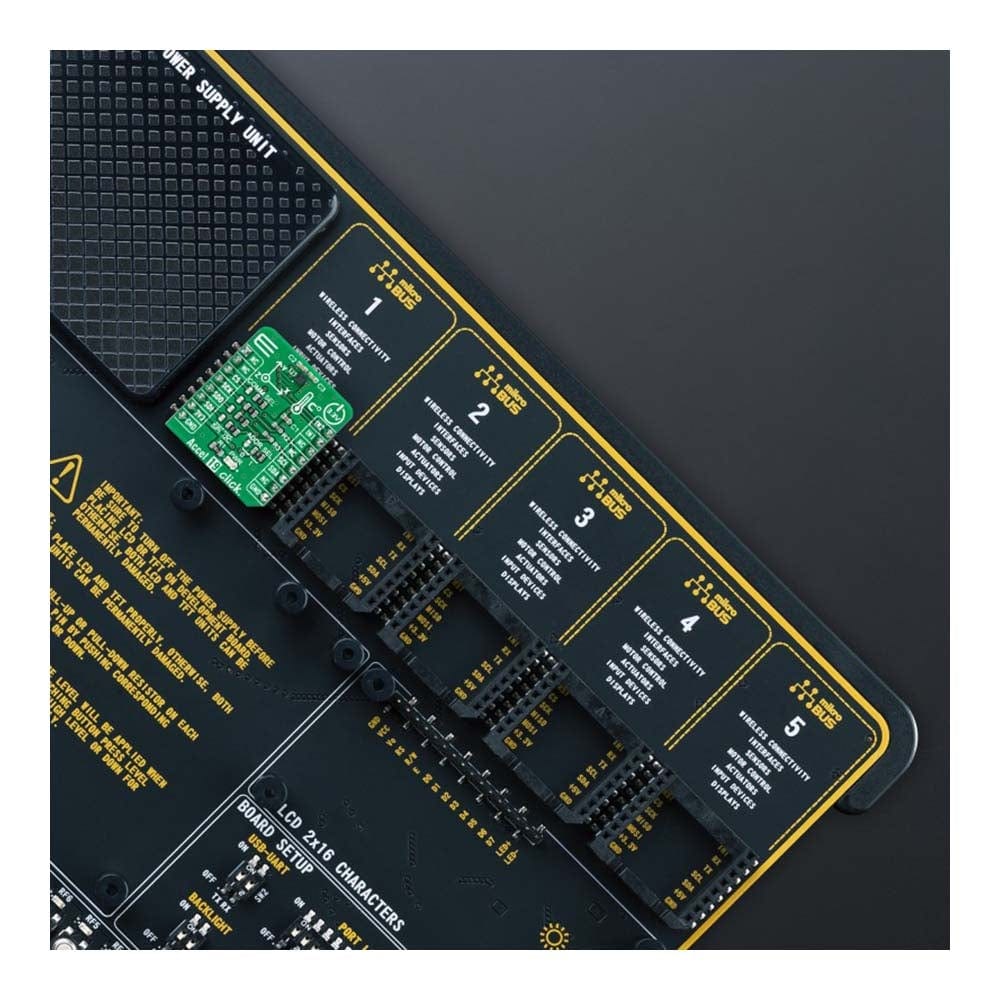
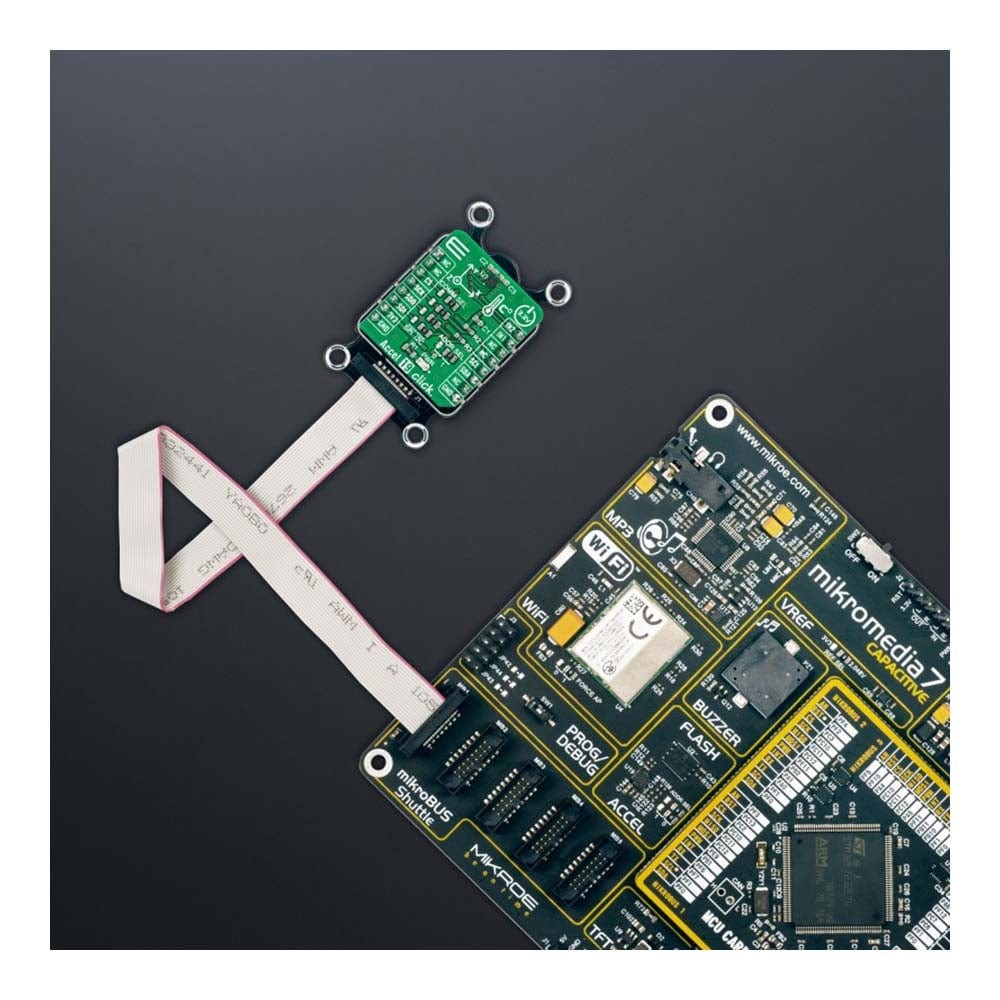
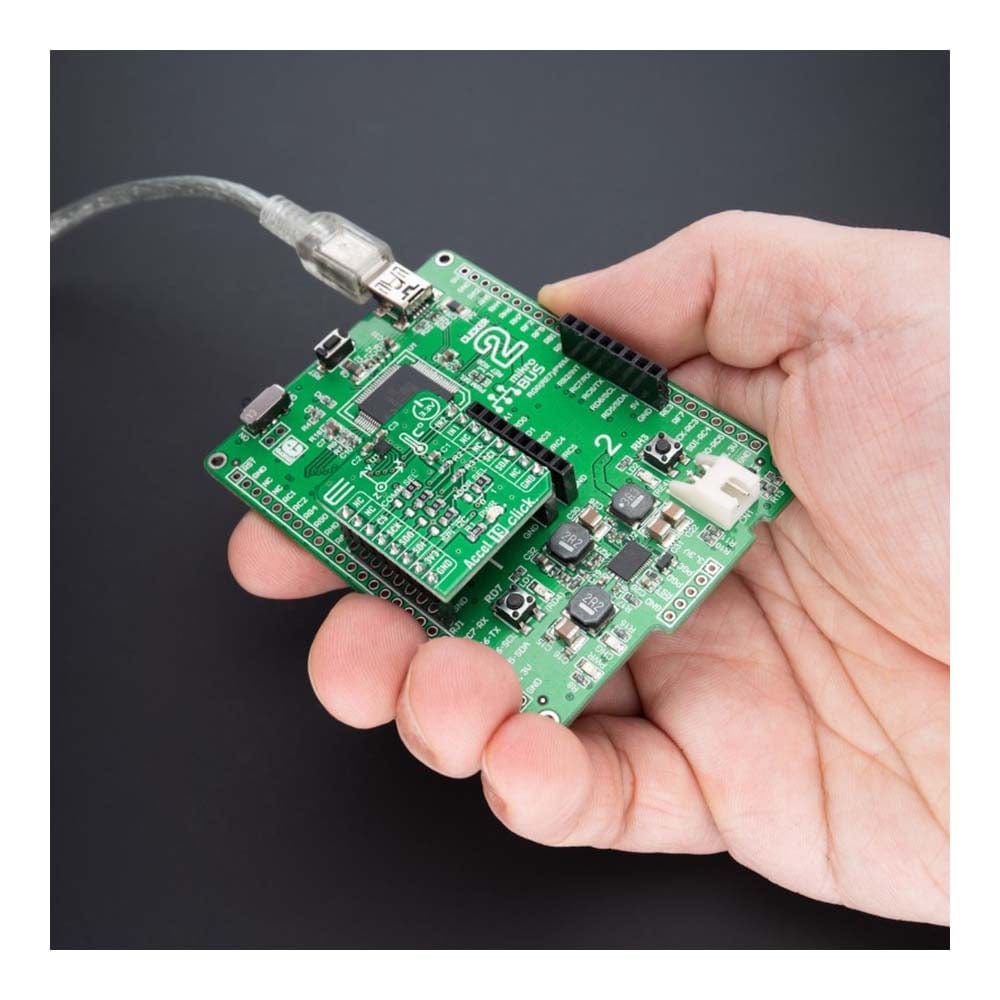
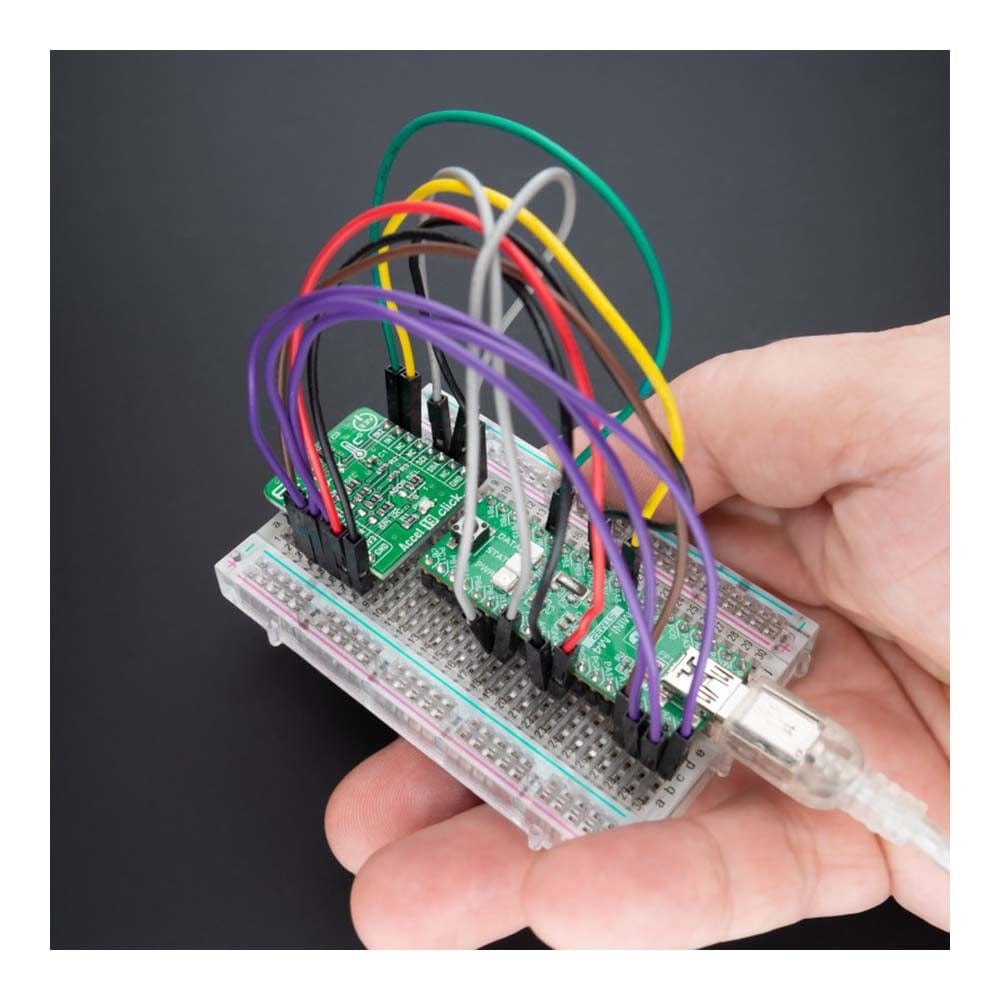
Overview
The Accel 19 Click Board™ is a compact add-on board that contains an acceleration sensor. This board features the LIS2DTW12, an ultra-low-power high-performance three-axis accelerometer from STMicroelectronics. It allows selectable full-scale acceleration measurements in ranges of ±2g, ±4g, ±8g, or ±16g in three axes with a configurable host interface that supports both SPI and I2C serial communication. Alongside an embedded 0.8°C accuracy temperature sensor with ODRs ranging from 50 to 1.6Hz and resolution from 8 to 12 bits, it has a dedicated internal engine to process motion and acceleration detection.
The Accel 19 Click Board™ is suitable for various applications such as motion-activated functions and user interfaces, tap-double-tap recognition, free-fall detection, tracking, and many more.
Downloads
L' Accel 19 Click Board™ est une carte complémentaire compacte qui contient un capteur d'accélération. Cette carte est équipée du LIS2DTW12, un accéléromètre à trois axes hautes performances à très faible consommation d'énergie de STMicroelectronics. Il permet des mesures d'accélération à pleine échelle sélectionnables dans des plages de ±2g, ±4g, ±8g ou ±16g sur trois axes avec une interface hôte configurable qui prend en charge les communications série SPI et I2C. Outre un capteur de température intégré d'une précision de 0,8°C avec des ODR allant de 50 à 1,6 Hz et une résolution de 8 à 12 bits, il dispose d'un moteur interne dédié pour traiter la détection de mouvement et d'accélération.
L' Accel 19 Click Board™ convient à diverses applications telles que les fonctions activées par le mouvement et les interfaces utilisateur, la reconnaissance par tapotement-double tapotement, la détection de chute libre, le suivi et bien d'autres encore.
| General Information | |
|---|---|
Part Number (SKU) |
MIKROE-4949
|
Manufacturer |
|
| Physical and Mechanical | |
Weight |
0.02 kg
|
| Other | |
Country of Origin |
|
HS Code Customs Tariff code
|
|
EAN |
8606027389740
|
Warranty |
|
Frequently Asked Questions
Have a Question?
Be the first to ask a question about this.

